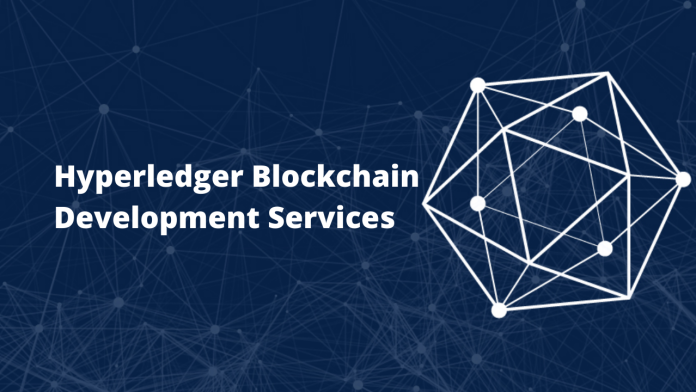An Overview of Hyperledger Fabric and Blockchain Technology
By definition, a blockchain is a continually expanding collection of documents (blocks) that are linked securely via encryption. A cryptographic hash of the preceding block, a timestamp, and transaction data are included in each of the individual blocks. The distributed ledger technology records any transaction between two entities quickly and permanently.
RisingMax is the leading IT consulting company in the United States providing Hyperledger Blockchain Development Services. With Hyperledger development services from RisingMax, you can build and manage fast and scalable, and secure blockchain systems that fit your enterprise’s demands and strategic business goals.The wonderful thing about Blockchain technology is that its decentralised network prevails among all allowed participants, saving time. Despite the fact that blockchains have their own problems, they are rated as being quicker and more reasonable than traditional systems, which attracts governments, banks, and other financial institutions.
Hyperledger Fabric As In Smart Contract Development
A smart contract is a software that operates automatically when it fulfils the preset terms and conditions on the Blockchain. Furthermore, smart contracts handle the direct transfer of assets or information between certain parties under defined conditions.
In terms of enforcing the agreement, smart contracts vary from ordinary contracts. However, the enforcer of smart contracts is the code itself, whereas the law is the enforcer of legal agreements.
In terms of smart contract creation, there are a number of distributed ledger technologies and platforms that may help in a variety of ways, one of which being Hyperledger Fabric. I’m stating the obvious. Let’s take a look at the Hyperledger Fabric’s high-level goals and features in this post.
Fabric Architecture & Formation in Hyperledger
Hyperledger’s approach incubates a slew of enterprise blockchain technologies and frameworks. The Fabric, also known as the Hyperledger Fabric, is a project led by IBM that aims to let developers create highly scalable blockchain systems with permissions flexibility.
Hyperledger Fabric is a distributed ledger platform with a modular design that is versatile, secure, and scalable in the backend.
Only users who subscribe through a Membership Service Provider (MSP) are eligible to engage in the network, which is a private blockchain system. The fabric also makes use of container technology to host smart contracts known as “chaincode,” which make up the framework’s application logic.
Participants in the Hyperledger Fabric are able to construct their own ledger channels for their transactions. Hyperledger fabric’s unique elastic and extendable design makes it easier to plan for the future of corporate blockchain development.
The Features of Hyperledger Fabric
-
Assets:
Allows all items having monetary value to be exchanged via the network. (From organic groceries to vintage automobiles)
-
Chaincode:
Chaincode execution is separated from transaction ordering to improve network scalability and speed, as well as to minimise the needed degrees of security verification across node types.
-
Encoding for Ledgers:
This property of immutability supports the shared ledger in encoding the whole transaction history for each channel and offers SQL-like query functionality for easy auditing and analysis.
-
Privacy of Channels:
Channels offer multilateral transactions with the privacy and security that enterprises and sectors that trade assets over a shared network demand.
-
Services for security and membership:
Allows authorised regulators and auditors to identify and trace all transactions through permissioned membership participants.
-
Consensus:
A unique consensus method provides the organisation with the flexibility and scalability it requires.
Hyperledger Fabric’s Benefits
-
Modular Architecture
In general, developing an enterprise blockchain remains difficult for developers since it necessitates a significant amount of work spent designing the necessary components. Fabric, which has a modular architecture, now has aspects that are truly advantageous. The Hyperledger Fabric architecture’s flexibility allows network designers and developers to plug in their preferred component implementations, which is extremely useful.
Many businesses want to create a permissioned blockchain by repurposing their existing identity management system. Fabric’s modular architecture now makes it simple for developers to add features like a bespoke identity management system and other common requirements.
-
Scalability & Performance
Because there is no POW algorithm or crypto mining in the fabric, it provides excellent scalability and rapid transactions. These steps provide the path for the establishment of trust and validation among various types of nodes. Only the signature read/write sets transit the network during the transaction lifetime, which improves scalability and speed.
-
Rich Query Capability
Every time the hyperledger fabric is updated, a new set of asset key-value pairs is added to the ledger, and the Fabric file system includes LevelDB, which is ideal for query functions.
LevelDB is a key-value database that supports key queries, as well as composite key and key range queries. It also enables the optional addition of CouchDB, a document database that stores material in JSON format. This makes querying the database a breeze since JSON avoids the need for frequent application updates only to make querying easier.
-
Sensitive Data Protection & Rich Community Support
Fabric includes a Hardware Security Model (HSM) that helps preserve and manage digital keys needed for authentication and provides a mechanism to keep private keys secure. HSM improves the security of keys and sensitive data, particularly in situations like identity management.
The fabric has one of the most diversified development communities, with representatives from a wide range of enterprises, each with strong competence in both blockchain technology and its major lines of business (LOBs). Fabrics’ future development plan will benefit greatly from the community’s collective strength.
-
Confidentiality and Privacy
Fabric is one of the better performing systems today because to all of these distinguishing design elements, which provide privacy and secrecy in both transaction processing and transaction confirmation latency.
-
Permissioned Blockchain
If you’re creating a blockchain for a business, it’s almost certainly a permissioned blockchain. There are no anonymous or pseudonymous users in a permissioned network.
-
Smart Contracts
Smart contracts written on general-purpose programming languages like Java, Go, and Node.js, rather than limited domain-specific languages, will be supported by a distributed ledger platform (DSL). For most businesses, getting started is simple. Your staff may programme smart contracts in the languages they already know, without the need to learn new ones.
-
Scalability and performance
Fabric V1 provides an industrial blockchain solution with a genuinely flexible, scalable, and secure base. Peers have been separated into two independent runtimes with three unique roles: endorser, committer, and consenter.
Hyperledger Fabric’s Limitations
-
New & Expanding
Given the recent debut of Fabrics and the tech community’s increased focus on the development of distributed ledger technologies and initiatives. It is predicted that adjustments and additions will continue in response to the evolving demands.
-
SDKs and APIs Have Their Limits
The SDKs for hyperledger development that are available in Java, Node, and other languages do not have comprehensive user-friendliness. To build things as needed, any blockchain developer will need to comprehend a little of the hyperledger fabric’s underlying code. Furthermore, not all SDKs are totally compatible to create/fetch/update anything, and there is a lack of architecture documentation.
Hyperledger Fabric Blockchain Technology’s Importance for Business
For international organisations, the concern of making transactions extremely affordable to record and easy to verify is quite real.
Fabric is a developer-focused open-source community that will benefit an ecosystem of Hyperledger-based solution. It providers and customers, concentrating on blockchain-related use cases. That will function across a variety of enterprises and industries rather than a “one-size-fits-all” solution. But wait a minute: why should you care?
“There will be a lot of public chains and a lot of private chains,” IBM Executive Director Brian Behlendorf said. “Each will have its own consensus process, preferred smart contract language, and other characteristics.” “The more code that underpinning these chains is comparable, the better.”
One of the project’s goals is to create an open-source family of blockchain frameworks, platforms, and libraries. That anybody can use to create and run their own apps to meet real-world business needs.
Keep in mind that Hyperledger will let you secure and customise supply logistics, distribution, and payment verifications amongst organisations behind these words.
Conclusion
It is undeniable that blockchain technologies are on the increase, and at a much quicker rate than expected. However, particularly following the adoption of the technology by banks and other financial institutions. To put it another way, there are a plethora of opportunities in the rapidly increasing industry of blockchain technology and Hyperledger Fabric offers you the ability to participate. RisingMax has also emerged as a global leader in making E Wallet mobile applications which provide detailed description about E Wallet App Development Cost.
In addition RisingMax has been working and experimenting with blockchain technology for quite some time. Therefore, if you need assistance implementing this emerging technology and examining how it might help your company expand. Then contact our blockchain engineer and put an end to the wait.







